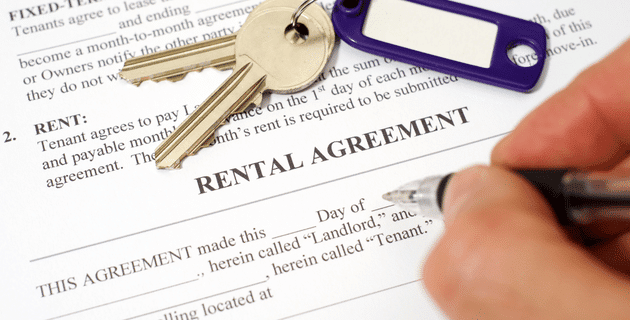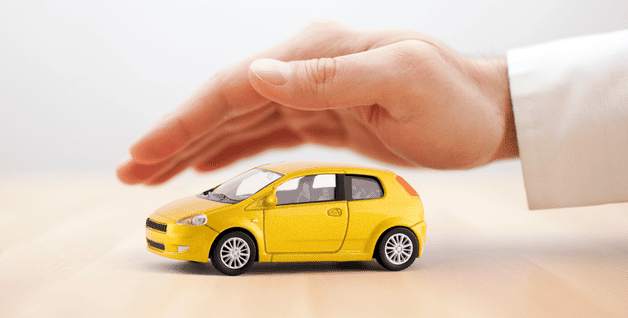
by California Casualty | Auto Insurance Info |
Kids spend a lot of time in and around vehicles. But they may not be aware of the potential risks, from automatic windows that can pinch tiny fingers, to cars that can back over their play areas without warning. Each year, more than 9,000 children are treated in the ER for injuries that happen in and around motor vehicles. Many of these injuries are preventable and teaching safe habits can help.
In honor of Child Passenger Safety Month in September, we’ve compiled a list of safety measures to teach your children so they can be safer in and around vehicles.
Safety Tips in a Vehicle
Buckle up.
Do:
-
-
- Have your child wear a seat belt for every ride.
- Position it correctly. The shoulder belt should be across the middle of the chest and shoulder. The lap belt should be low and snug across the hips.
Don’t:
-
-
- Place the shoulder belt under your child’s arm or behind his or her back.
- Play with seatbelts. Kids can easily become entangled.
Use a car seat or booster.
Do:
-
-
- Follow height, weight, and age guidelines for car seats and boosters in your state. This will ensure that seatbelts are positioned appropriately.
- Measure and weigh your kids a few times a year to determine which seat is best.
Don’t:
-
-
- Let your child ride in the front seat until about age 13 when airbags will not present a danger.
- Let kids lay down and sleep outside of their car or booster seats.
Practice safety around windows and doors.
Do:
-
-
- Explain that windows can go up and down, and pinch anything in their way.
- Teach that doors must stay closed when the vehicle is moving.
Don’t:
-
-
- Let your child touch the door handles or window controls unless an adult says it’s okay.
- Allow your child to stand on the armrest where controls are often located.
- Let your child put their hands or head outside the window.
Let the driver focus on the road.
Do:
-
-
- Encourage your child to sit quietly or find a quiet activity and enjoy the ride.
- Allow your child to ask appropriate questions and make polite conversation.
- Have your child ask the driver to pull over to a safe place if they need help with something (such as opening a juice box).
Don’t:
-
-
- Let your child be too loud. Your child should know that a car is not the place to argue or throw a tantrum.
- Encourage your child to ask the driver to look at something that’s not on the road.
- Allow your child to do anything that could lead to distracted driving for the driver.
A car is not a toy.
Do:
-
- Enforce the rule to stay safely in one’s seat when the car is moving.
- Encourage your children to find places other than the inside or the outside of a car to play.
Don’t:
-
-
- Let your children move around and play in a car even when it is not moving.
- Allow your kids to crawl into the trunk for any reason. It is not a good hiding spot and they could get trapped.
Pro Tip: Teach older children that cars (manufactured after September 2001) have glow-in-the-dark emergency release switches inside trunks. Show them how to find and release them in case of an emergency.
Safety Tips Around a Vehicle
Do:
-
-
- Help your children to pay attention to their surroundings. Look all around, and walk carefully and slowly.
- Show your children the white brake lights that indicate a car will be backing out.
- Require that your kids stay close to a supervising adult.
Don’t:
-
-
- Allow your children to run or play in a parking lot.
- Assume that parked cars will stay parked. Tell your children that cars often move suddenly.
Driveways are dangerous.
Do:
-
-
- Supervise children whenever they are playing in a driveway.
- Put up cones and flags when children are playing to alert cars and prevent them from pulling into the driveway.
- Designate a safe spot for children to stand when cars are pulling into or out of the driveway.
Don’t:
-
-
- Leave toys, chalk, bicycles, or any items that might entice kids in a driveway. Be sure to clean up after any driveway play.
- Allow your children to chase after balls or other toys that roll out of the driveway into the street.
- Assume a car sees you. Tell your children that just because you see them doesn’t mean that drivers see you.
Practice roadside safety.
Do:
-
-
- Teach your children the rules of the road for pedestrians.
- Toddlers should never be near a road without holding an adult’s hand. Teach them the difference between roads, sidewalks, crosswalks, and driveways. (Pro Tip: Play I Spy… and make it a game.)
- Preschoolers can recognize road signs by shape and color and traffic lights. Teach them the “stop, look and listen” rule, and to only cross the street with an adult.
- School-age children should be supervised by an adult. Teach them safe paths to walk and safe places to cross. As they get older, let the child take the lead to walk or bike to school, but go with them until you are confident that they can do it on their own.
- Pay close attention in school safety zones and around school buses.
- Reinforce safety skills with games like the Safe Paths to School downloadable board game for ages 4-12.
Don’t:
-
-
- Think that children can accurately judge distance and speed when it comes to moving vehicles.
- Forget to model the behaviors that you want your children to follow.
What Parents Can Do:
Do:
-
-
- Lock your car and put the keys out of reach of children.
- Create reminders so you don’t accidentally leave a young child in the car. Keep a stuffed animal in your child’s car seat, and place it in the front passenger seat when your child is in the car. That will be a visual reminder to check the back when you get out.
- Take a 5-second walk around your car before you back it up. Look to see if there are any children playing near it. The smallest kids are sometimes not seen, and children sometimes dart behind vehicles without thinking about it.
Pro Tip: Consider getting a backup alarm that sounds when you back up to help provide a warning to kids.
Don’t:
-
- Leave your children unattended in the car. Even if you have automatic safety systems, your child might find a way to test those. (If you see an unattended child, call 9-1-1.)
- Use your cell phone while driving. Model the behavior you want to see, and talk to your kids about the dangers of distracted driving.
Finally, maintain your car and insure your vehicle for additional peace of mind. Keeping you and your family safe is a wonderful way to celebrate Child Passenger Safety Month.
This article is furnished by California Casualty, providing auto and home insurance to educators, law enforcement officers, firefighters, and nurses. Get a quote at 1.866.704.8614 or www.calcas.com.

by California Casualty | Auto Insurance Info, Safety |
You’ve got the captain’s hat. You’re bringing the cooler. But what else do you need—or want—to have fun and stay safe on the water this summer?
There are literally hundreds of great boat accessories on the market, plus lots of safety gear to choose from. We’ve compiled a list of practical and fun items you’ll want to keep on your boat this summer. Scroll down for a list of what to leave at home, too.
First the fun…
A mounted grill – Treat everyone to a BBQ out on the open water. You can find boat grills in gas, charcoal, and electric. Just make sure to wait to grill until the boat has stopped, and don’t leave it unattended.
An inflatable boat slide – Everyone loves a boat slide! Choose one that inflates quickly, stores compactly, and holds adults as well as children. Durability is a plus.
Tow tubes – Give your passengers a ride on the waves using a tow tube. These fun accessories come in different shapes and sizes and accommodate a range of ages. Make sure you check the maximum weight and rider limit and equip all of your riders with life jackets.
Speakers – Crank up the tunes with some great speakers that are waterproof and can stand up to the elements, including wind, sun, and the motion of your boat.
Fish finder – Take the guesswork out of fishing. Today’s fish finders feature digital screens and include systems like GPS, electronic compasses, and radar. Starting at about $100, these instruments can go into the $1,000s.
Then the practical…
10-in-1 Boat Tool – This is the “Swiss Army Knife” of boat tools with every gadget imaginable. Not only does it include a fishing line cutter, a marine gas cap key, and a safety whistle, it includes a beer and wine bottle opener.
Telescopic boat hook – Until you have one, you don’t realize how useful these are! These hooks help you retrieve items that fall in the water. They also help you more easily get hold of the dock lines attached to pilings.
Underwater LED lights – If you take your boat out at night, an underwater light can help your boat be seen in the dark. These lights can come in different colors and add a cool ambiance.
Non-tipping can cooler – The rocking motion of your boat can easily tip your drinks. Secure them, and keep them cold, in a non-tipping can cooler.
Boat fenders – These cushions absorb the impact of bumps against docks and other boats.
And the necessities…
Don’t forget to pack a boat emergency kit full of the boat safety basics:
-
- Life jackets and throwable personal flotation devices in case someone goes overboard
- Fire extinguishers (check the regulations to see how many you need for the size of your boat)
- First aid kit, including motion sickness remedies
- VHF Radio for communications
- Signal flares (both visual and sound)
- Waterproof flashlight
- A way to get weather updates
- Basic tool kit for repairs and basic maintenance
Remember to leave these at home…
-
- Spray sunscreen which can leave a slippery film on deck
- Shoes with dark soles that leave marks
- Cigarettes/cigars that can accidentally cause a fire
- Perfume that attracts bees and can cause nausea in close quarters
- Glass containers that could shatter
- Plastic grocery bags that could fly off the boat and clog waterways
Finally, check your boat insurance. Make sure you’re fully protected from accidents, uninsured boaters, and liability claims.
Happy boating!
This article is furnished by California Casualty, providing auto and home insurance to educators, law enforcement officers, firefighters, and nurses. Get a quote at 1.866.704.8614 or www.calcas.com.

by California Casualty | Auto Insurance Info, Homeowners Insurance Info |
Do you want to save money on your insurance payments? Did you know there’s a way to do that without raising your deductible or lowering your coverage? The answer is bundling.
What is bundling? It’s a term to describe a multi-policy discount. If you have more than one policy with an insurance company, you may bundle those policies and, in the process, you can save on all.
Here’s why you might consider bundling:
-
- Bundling can save you money. Depending upon the amount of coverage for your policies, and your state, you can save from 5% to 25%.
- Bundling is convenient. It simplifies bill paying and record keeping since you interact with just one insurer.
- Bundling can help ensure you are fully covered. Having all policies with one company allows your insurance advisor to review any gaps in coverage.
There are many different ways to bundle your insurance.

Homeowner’s Insurance Bundles
Your home is one of your greatest investments; you need to make sure that it’s fully protected. There are plenty of decisions to make when buying your own policy- from coverage limits to extra protection for your belongings. One of those decisions might be to incorporate additional coverage to enhance your policy. When you bundle those with your home insurance, you can save money.
You can choose to bundle your home insurance with:
- Sump pump endorsement: A sump pump is a device that collects excess water and drains it outside your home. Sump pump coverage covers the costs of repair and replacement in the event of a sump pump failure. Just a couple inches of water backup can cause thousands of dollars in damage – ruining carpets, destroying appliances, and crumbling drywall.
- Flood insurance: Regular home insurance does not cover flood damage. That’s why many people in flood zones purchase this extra policy. There is a 30-day waiting period to buy flood insurance, so take that into consideration.
- Auto insurance: If you have a vehicle, you likely have liability, collision, and/or comprehensive insurance. Liability coverage is used to pay for damages that you cause. Collision coverage helps to pay to repair your vehicle or get one of equivalent cash value if yours is totaled. Comprehensive coverage is for damage to your vehicle other than collisions, such as natural disasters, fires, vandalism, theft, and animals that damage your vehicle.
- College students and renter’s insurance: If your college student* lives away at school, his or her belongings are covered by your homeowner’s policy at 10% of the limit of liability or $1,000, whichever is greater. You may want more coverage than 10%. Talk to your insurance advisor about expanding limits, such as an umbrella policy to cover expensive items your student is bringing to college. Alternatively, consider purchasing renter’s insurance for your college student for an off-campus apartment. Renter’s insurance not only protects your student’s possessions but offers them emergency housing if they are unable to reside in the rental unit. Renter’s insurance is surprisingly affordable, so when you bundle it with your homeowner’s, it could practically be free!
*Note that college students must meet certain requirements in order to qualify as an insured on your homeowner’s policy. This includes age limitations, family relationship, and full-time enrollment in school. In the event of theft coverage, they must have lived in the location 60 days immediately before the loss.
- Earthquake Insurance: If you live in an area that is prone to earthquakes, you may want to consider this additional coverage. Homeowner, condo, and rental insurance policies typically do not cover earthquakes.
- Umbrella policies: This type of policy provides additional personal liability insurance that starts to pay after your underlying limits of liability on your home insurance policy have been exhausted after a covered loss. While there’s no way to know for sure how much liability coverage you may need, understanding what you stand to lose is a good place to start. If you’re being sued, it’s possible that equity in your home, your personal savings, and your income may be at risk. If the value of two years of your annual income, the equity in your home, and your savings exceed the liability limits on your auto or home insurance policies, then you should consider an umbrella policy to protect your net worth.

Renter’s Insurance Bundles
Renter’s insurance is like homeowner’s insurance but for tenants. Starting at about $10 a month, it protects your personal belongings (that’s right, your landlord’s insurance policy will not cover your belongings) but that’s not all. It’s an important safeguard if you’re found at fault for property damage or injuries at your place (and even around the world). It also can help if you don’t have access to your apartment or home due to a covered loss.
You can choose to bundle your renter’s insurance with:
- Auto insurance: As described above, auto insurance helps protect you in the event of an accident or other damage to your car. When you bundle your renter’s policy with an auto policy that you already have, the savings can be substantial.
- Pet insurance: Our pets are like family and we want to keep them as healthy as possible. Pet insurance can help to offset those veterinary expenses. Depending on your policy, pet insurance may cover exams, prescriptions, lab tests and x-rays, surgeries, emergency visits, and even cancer. You make the initial payment and then are reimbursed depending upon the deductible and limits that you have selected. (Pet insurance also may be bundled with homeowner’s, too.)

Auto Insurance Bundles
Auto and homeowner’s insurance, and auto and renter’s policies, are among the most popular types of insurance bundles. However, you also may wish to bundle your car insurance with a boat policy.
- Boats and personal watercraft: If you have a boat, you will need a boat insurance policy. You also need a separate policy for personal watercraft such as jet skis. The policies protect you from vandalism, accidents, and liability for injuries to others.
*Note that motorcycle insurance is not eligible for a bundling discount. However, if you live in a cold climate state, and only ride your bike in warmer months, you can ask about seasonal coverage.
Each year, California Casualty policyholders save an average of $423* a year. That could be even more if you decide to bundle your coverages. See how much you can save and get started with a free quote today at mycalcas.com/quote.
This article is furnished by California Casualty, providing auto and home insurance to educators, law enforcement officers, firefighters, and nurses. Get a quote at 1.866.704.8614 or www.calcas.com.

by California Casualty | Auto Insurance Info, Travel |
With its beautiful beaches, rich culture, and delicious cuisine, Mexico is a popular travel destination. Plus, it’s one that can be reached by car for many Americans. If you’re planning a family road trip to Mexico or heading there for some much-needed rest and relaxation, you’ll want to do your research. Here are some tips to get you started.
Apply for Mexico Auto Insurance.
Mexico does not recognize U.S. auto insurance. If you’re driving to Mexico from the U.S. in your own car or a rental, you will need to purchase a tourist auto policy.
-
- A Mexico auto policy will allow you to cover damages if you’re involved in an accident.
- If you cannot show proof of Mexican insurance, you can be heavily fined and even arrested. This is true even if you are not at fault for the accident.
- You can get coverage for the duration of your trip: a few days, a few months, or longer.
- You can purchase this coverage from your U.S. insurer.
If driving your own car, apply for a vehicle permit.
Mexico requires temporary import permits, which essentially is registering your car in the country. The government agency that issues permits is called Banjercito. You will be asked to leave a monetary deposit that will be returned to you when you return home.
-
- You may purchase this temporary import permit at the border.
- You also may find it online. (Click the Ingles/English version to see the page in English.)
Avoid rental car scams.
It’s common for car rental places in Mexico to quote very low prices but to have hidden rental fees. When you show up to get your car, you discover that you have to pay crazy high fees.
-
- Be wary of low car rental fees and make sure to read the fine print.
- Make sure you set up rental car insurance.
- Discover Cars is a reputable website that helps you find the best rental prices.
Make sure you carry valid identification.
U.S. citizens must present a valid U.S. passport (book or card) and an entry permit which you will receive at immigration when you cross into Mexico. If you are driving a car, you also need a driver’s license.
-
- A U.S. driver’s license works in Mexico, but if you have time, you may apply for an international driver’s permit. It sometimes takes about 6 months to receive one, but it will translate your license into Spanish.
- When the immigration officer hands your stamped passport back to you at customs, it will include a tear-off FMM form. Hold onto this form and keep it with you. It is important documentation and you will need to show it when you leave the country. Otherwise, you will have to pay a fine.
Understand Mexican road markings and signage.
You’ll want to brush up on your Spanish for your Mexico road trip. That’s the language for the road signs. The signage also may look a little bit different than what you’re used to, so familiarize yourself with it before you go. Also, Mexico uses the metric system, so you may want to reacquaint yourself with it.
-
- Remember that both distance and speed limits are in kilometers. If you’re driving your U.S. car, it should have a reading for kilometers. If you’re driving a rental car from Mexico, kilometers should be displayed automatically.
- Keep a copy of Mexican road signs with English translations with you in the car.
- Stop lights are horizontal rather than vertical.
Know Mexico’s road system.
While you may expect traveling in Mexico to be a bit different than the U.S., you may be surprised at some basic differences. There are Facebook groups where you can talk to former U.S. citizens living in Mexico – ex-pats – and ask specific questions about your proposed route.
-
- There may not be gas stations in rural areas. You can ask around, as sometimes gas is sold in convenience stores.
- You have to pay to travel the highways and they can be surprisingly expensive. They only take cash, not credit cards.
- On the free roads, look out for speed bumps that may or may not be marked. These are known as topes and can cause damage to your car if you hit them too fast.
- If you’re traveling between states in Mexico, there are military-style checkpoints where you will have to stop and let them search your car.
Ride the bus.
Mexico has a bus system with different classes of service, and many U.S. visitors enjoy its higher classes—which are comparable to business class airline service.
-
- Executive and first-class bus travel come with comfortable seats, air conditioning, and onboard restrooms. These routes are efficient and operate on time with few stops.
- Some bus stations include lounges for executive travelers.
- Toilets at bus stations come with a charge of between $3-$5 for entry, so be prepared.
- Mexico also offers shared minibusses and vans known as colectivos (and other names). While you can save money using these, they may be cramped, without air conditioning and they have been known to break down—so use these with caution.
Know where you want to go.
Mexico has 758,00 square miles (or 2 million square kilometers) to explore. This includes beaches, mountains, cities, canyons, jungles, and more—plus plenty of distinctive food, culture, architecture, and activities. Plan out where you are going to go so that you can get the most out of your trip, and do it safely.
-
- In some parts of Mexico, there are caverns with underground water where you can swim. These swimming holes are called cenotes.
- Beaches in certain regions of Mexico have a seaweed problem known as sargassum. This starts in late spring and continues to the fall, so check to see whether this affects where you will be visiting.
- Most of Mexico’s museums are closed on Mondays so plan your trip accordingly.
Be an informed traveler.
Travel helps to broaden your horizons with exposure to different cultures and experiences. Do your research on your destination so that you will not only understand the local perspective but you can enjoy it.
-
- Know that time is relative in Mexico. Do not assume that everything is going to start on time. In most cases, it probably won’t. Plan for this when making your itinerary.
- There is no free Wi-Fi in Mexico’s cafes and restaurants.
- The Spanish word for women is “mujeres,” which means that bathrooms labeled with the letter “M” are for women. (This is especially confusing to American travelers!)
- Don’t drink the tap water in Mexico. It’s not safe. To avoid paying lots of money for bottled water, consider bringing a reusable water bottle with a disposable filter.
- Cash is king in Mexico, so where possible, pay with pesos. When paying with a credit card, many merchants will add a tip before running the card, so be aware. (You can actually tell them the tip you want to add before running the card.)
- When withdrawing money, look for ATMs that are located inside banks. If you have a problem with a street ATM, it may be hard to locate the owner.
Pay attention to State Department travel warnings.
Whenever you are traveling out of the country, it is good to check the U.S. State Department’s website for any travel warnings for your destination. These will include any security or health risk warnings, including updates on COVID-19.
-
- Sign up for the Smart Traveler Enrollment Program, a free service that gives you the latest updates when you’re traveling out of the country.
- The State Department will tell you if there are regions to avoid and precautions to take on your travels. Follow their recommendations.
- A vacation could turn into an expensive COVID-19 quarantine if you unexpectedly have to cover the costs of additional days in Mexico, so plan accordingly.
Safe travels.
This article is furnished by California Casualty, providing auto and home insurance to educators, law enforcement officers, firefighters, and nurses. Get a quote at 1.866.704.8614 or www.calcas.com.

by California Casualty | Educators |
School’s out. That means plenty of chances for summer fun. It also means endless opportunities for screen time. If you’re wondering how you’re possibly going to manage your child’s screen time this summer, read on!
We’ve compiled 15 of the most fun activities to do at home with your kids that don’t involve screens.
1. Get in the kitchen. Give your kids a chance to mix up a batter for their favorite cookies. Or have them make pizza bagels or another fun snack. You don’t have to use a stove or oven either. There are plenty of no-bake recipes. Just be sure to supervise your children whenever they are cooking in the kitchen.
2. Put on a play. Bring down that box of old costumes, your old bridesmaids dresses, and fun props. Equip your kids with everything they need to put on a play – or a fashion show. They can even bring a favorite story to life.
3. Make a time capsule. A special way to mark the summer is to make a time capsule. Make sure to date it and include some timely items. Trace around your child’s hand for a handprint. Include packaging from your child’s favorite snack. Add an art project, an all-about-me page, photos, newspaper or magazine clipping, certificates, or anything else your child wants to add.
4. Camp in the backyard. Your backyard makes a great campground, and best of all, it’s near everything you need at home! Set up a tent, sleeping bags, and games. Prepare a picnic lunch or dinner. If you have a fire pit, try this project for natural bug bombs to keep the mosquitos away.
5. Do a backyard bug or scavenger hunt. Take an up-close look at the tiny critters in your backyard. Use this free printable bug hunt to guide you or make your own with other common items found in your backyard, like flowers or rocks. Your child can even bring a notebook and draw the bugs or objects that they see.
6. Create an obstacle course. Empty boxes, hula hoops, and even sidewalk chalk or masking tape create fun obstacle courses. Create one inside or outside using materials right at home. Jump, crawl, skip and navigate these fun courses according to your child’s rules, of course!
7. Make a weather station. Have a future meteorologist? Interest them in this craft project with a purpose. Guide them in making their own weather vane, windsock, rain gauge, and more, with materials you have right around the house.
8. Make bubbles. Sure, you could buy bubbles but it’s way more fun to make them! Try these bubble recipes. Save them for a nice day. Their sugary residue probably won’t do well indoors.
9. Learn to sew. Sewing is a skill that will help your child for years to come. If you feel your child can hold a needle safely, start them by sewing two pieces of fabric together. There also are children’s sewing projects available at craft stores.
10. Try blow art. This is a fun way to paint by blowing through straws. Start with tempera paint that is thinned with water in a bowl. Use plastic spoons or droppers to place a small drop of paint on the paper. Then have your child blow through the straw on the paint to create abstract art.
Pro Tip: To ensure young children don’t accidentally suck up paint through the straw, cut a little hole in the middle.
11. Leave chalk notes for your neighbors. Break out your favorite sidewalk chalk and get to drawing! Draw an obstacle course for dog-walkers to test out on the sidewalk or leave kind messages for you neighbors to see when they come outside.
12. Make a DIY bird feeder. You only need 4 items- cookie cutters, gelatin, bird seed, and yarn. And then kids can hang their homemade feeders in the backyard and spend the day bird watching.
13. Run a lemonade stand. Not only is a lemonade stand a fun activity, it’s a great one to learn about business. Help your child determine the costs to make the lemonade and get the cups. Then help him/her to figure out what to charge. Your child can use art skills to make a poster with prices. Your child may opt to keep the proceeds or donate to an organization in need.
Pro Tip: Check if your local community requires a permit to sell lemonade. The exact rules vary by location.
14. Rescue a frozen toy. This takes a little more preparation, but it’s something your child can help with. Choose small toys that fit into an ice cube tray. Cover them with water and then freeze them. When you’re looking to occupy your child for a few minutes, give them the frozen toy, a cup of hot water, and an eye dropper. Challenge them to rescue the frozen toy. Time them to see if they could beat their best time.
15. Make a summer bucket list. Get your kids involved with what they’ll be doing this summer. Have them make lists of movies they want to watch, books they want to read, places they want to visit, and friends they want to see. Then use the list as a guide for summer fun that doesn’t involve screens.
And for those rainy indoor summer days, check out our list of 100+ Indoor Activities for Kids that Don’t Involve Screens.
Have a great summer!
This article is furnished by California Casualty, providing auto and home insurance to educators, law enforcement officers, firefighters, and nurses. Get a quote at 1.866.704.8614 or www.calcas.com.








